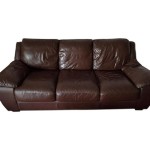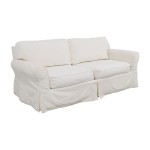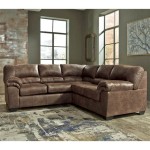Average Sofa Back Height In Cm
The selection of a sofa is a multifaceted endeavor, encompassing considerations of style, comfort, material, and, importantly, dimensions. Among these dimensions, the back height of a sofa significantly influences its overall aesthetic and ergonomic properties. Therefore, understanding the average sofa back height in centimeters is crucial for both interior designers and individual consumers seeking to make informed purchasing decisions.
The back height of a sofa, typically measured from the floor to the top of the backrest, plays a crucial role in defining the perceived level of support and the visual impact of the furniture piece within a room. A taller backrest generally provides more support for the back and neck, promoting a more comfortable seating experience, particularly for individuals who prefer a higher degree of lumbar support. Conversely, a lower backrest can create a more open and airy feel in a space, contributing to a minimalist or modern aesthetic. In order to comprehend the context of averages, it's crucial to delve into the factors that contribute to the variability in sofa back heights.
Several factors contribute to the variation in sofa back heights. These factors including design styles, ergonomic considerations, intended use and space constraints. Different sofa styles, like the Chesterfield or Lawson, inherently possess distinct back heights, dictated by their historical design characteristics. Couches designed for specific purposes, such as sectional sofas intended for lounging, may feature lower backrests to encourage a more relaxed posture. Size and design of room also plays a major role in determining the adequate sofa height. Smaller spaces may necessitate sofas with lower backrests to avoid overcrowding or visually overwhelming the area.
Standard Sofa Back Height Ranges
While there is no single "standard" sofa back height applicable across all styles and manufacturers, a general range can be established. Typically, sofas fall within the back height range of 75 cm to 95 cm from the floor. This range encompasses the majority of conventional sofa designs intended for general seating and relaxation. However, it is important to recognize that this range represents an approximation, and deviations can occur depending on the specific design and manufacturer. Sofas with back heights exceeding 95 cm are often considered to be high-backed sofas, while those below 75 cm are classified as low-backed sofas.
Within this range, the lower end of the spectrum, around 75 cm to 80 cm, is commonly observed in modern and contemporary sofa designs. These sofas often prioritize a sleek, minimalist aesthetic and may not offer extensive back support, focusing instead on a lower profile. The mid-range, approximately 80 cm to 90 cm, represents a more versatile range suitable for a wide variety of styles and seating preferences. Sofas in this range often provide a balance between support and aesthetics, making them a popular choice for both formal and informal living spaces. The higher end of the range, 90 cm to 95 cm, is frequently found in more traditional or transitional sofa styles, often incorporating features such as button-tufting or rolled arms. These sofas typically prioritize back support and a more substantial presence within the room.
It is important to note that these ranges are indicative and can fluctuate based on individual manufacturer specifications. Furthermore, the presence of cushions can also influence the effective back height. Thick back cushions can significantly increase the level of support provided, even in sofas with relatively lower backrests. Moreover, the seat height of the sofa also plays a crucial role in perceived comfort and support. A higher seat height may necessitate a higher backrest to maintain proper ergonomic alignment. Therefore, when evaluating sofa back height, it is essential to consider it in conjunction with other dimensions and design factors.
Impact on Ergonomics and Comfort
The back height of a sofa directly affects the ergonomics and overall comfort experienced by the user. A properly designed sofa backrest should provide adequate lumbar support, promoting proper spinal alignment and reducing the risk of back pain or discomfort. The ideal back height will vary according to the individual's height and body type, as well as their preferred seated posture. Individuals who prefer to sit upright with their backs fully supported will generally benefit from a higher backrest, while those who prefer to lounge or recline may find a lower backrest more comfortable.
Sofas with insufficient back height may lead to slouching or hunching, which can strain the back muscles and contribute to poor posture. Conversely, sofas with excessively high backrests may feel restrictive or uncomfortable for shorter individuals. The angle of the backrest also plays a crucial role in determining comfort. A slightly reclined backrest can provide a more relaxed seating position, while a more upright backrest can promote a more formal posture. The depth of the seat is another important factor to consider in conjunction with back height. A deeper seat may require a higher backrest to provide adequate support for the upper back and shoulders.
The types of cushions used in the backrest also significantly impact the overall comfort. Soft, plush cushions can provide a more luxurious and enveloping feel, while firmer cushions can offer more support and maintain their shape over time. The distribution of cushioning within the backrest is also important. Lumbar support cushions, for example, can provide targeted support for the lower back, enhancing comfort for individuals with back pain or discomfort. The choice of upholstery material also influences the overall comfort and feel of the sofa. Breathable fabrics, such as linen or cotton, can help to regulate temperature and prevent overheating, while softer materials, such as velvet or microfiber, can provide a more tactile and comfortable seating surface.
Considerations for Interior Design and Aesthetics
Beyond ergonomic considerations, the back height of a sofa also plays a significant role in the overall interior design and aesthetic of a space. The height of the backrest can influence the perceived scale and proportion of the sofa within the room, as well as its visual impact. A sofa with a high backrest can create a more formal and imposing presence, while a sofa with a low backrest can contribute to a more open and airy feel.
When integrating a sofa into a room, it is essential to consider the existing architectural features and the overall style of the space. In smaller rooms, a sofa with a lower backrest can help to prevent overcrowding and maintain a sense of spaciousness. In larger rooms, a sofa with a higher backrest can serve as a focal point and anchor the space. The color and texture of the sofa upholstery also play a crucial role in its visual impact. Lighter colors and smoother textures can make a sofa appear smaller and less imposing, while darker colors and heavier textures can create a more dramatic and substantial presence.
The style of the sofa should also complement the overall design aesthetic of the room. A modern or contemporary space may benefit from a sofa with a sleek, low-profile design, while a more traditional space may call for a sofa with a higher backrest and more ornate detailing. The placement of the sofa within the room is also crucial. A sofa placed against a wall will have a different visual impact than a sofa floating in the center of the room. The height of the backrest should be considered in relation to the height of other furniture pieces in the room, such as coffee tables, side tables, and lamps. A well-proportioned arrangement of furniture can create a sense of balance and harmony within the space.
Ultimately, selecting the appropriate sofa back height requires careful consideration of both ergonomic and aesthetic factors. By understanding the typical range of sofa back heights and their impact on comfort and design, individuals can make informed decisions that align with their personal preferences and the specific requirements of their living space.

The Perfect Sofa Backrest Height Explained By Experts Cozylant

Sofa Dimensions For 2 3 4 5 6 Person Couches Diagrams Included Home Stratosphere

Sofa Dimensions For 2 3 4 5 6 Person Couches Diagrams Included Home Stratosphere

Standard Sofa Dimensions For 2 3 4 And 5 Person Charts Diagrams Engineering Discoveries

Sofa Dimensions For 2 3 4 5 6 Person Couches Diagrams Included Home Stratosphere

Sofa Dimensions For 2 3 4 5 6 Person Couches Diagrams Included Home Stratosphere

Sofa Dimensions A Comprehensive Guide To Diffe Couch Sizes

Standard Sofa Height Is It Right For You The Stated Home Blog

How To Pick The Right Sofa Dimensions

Sofa Dimensions In Mm








